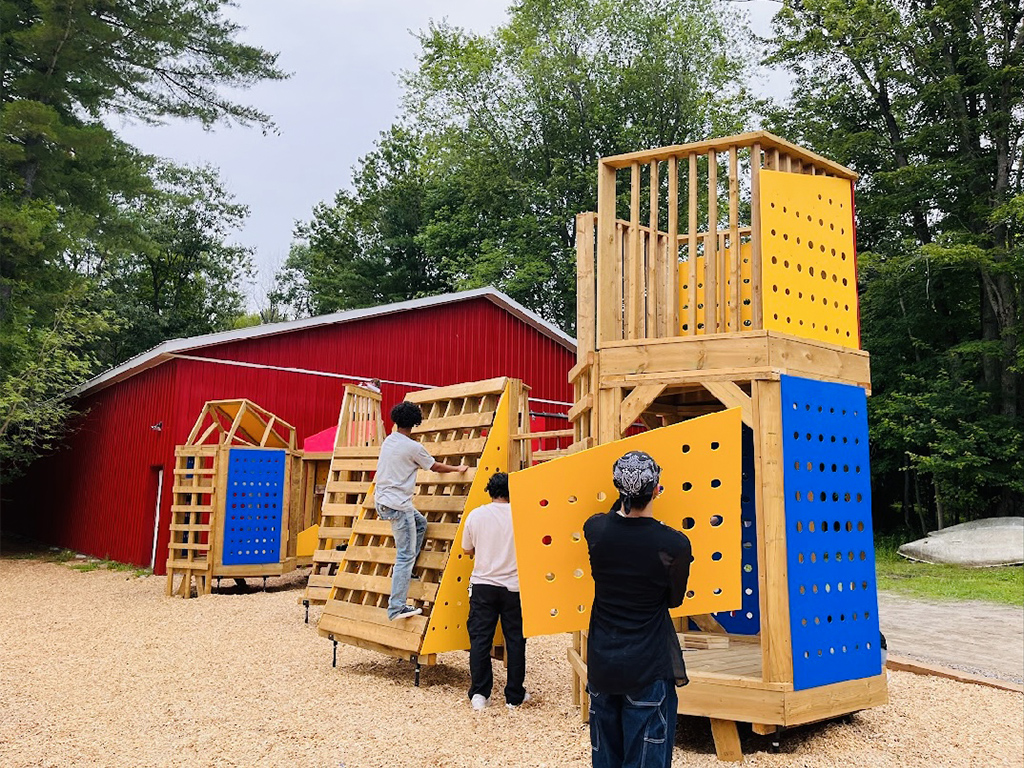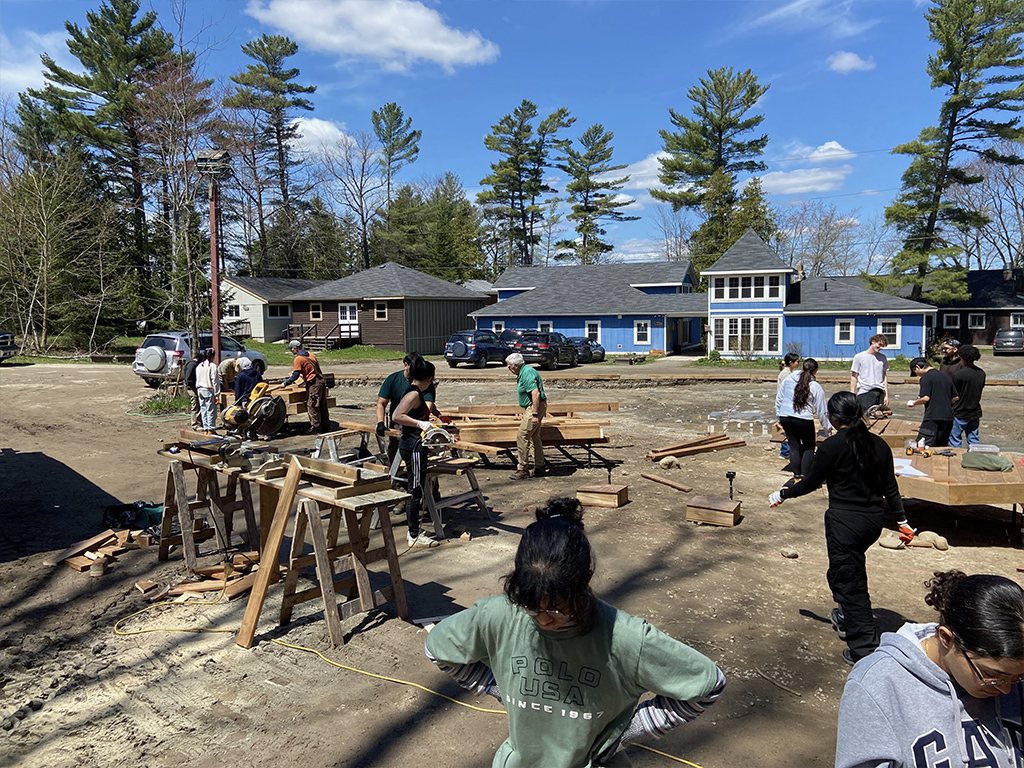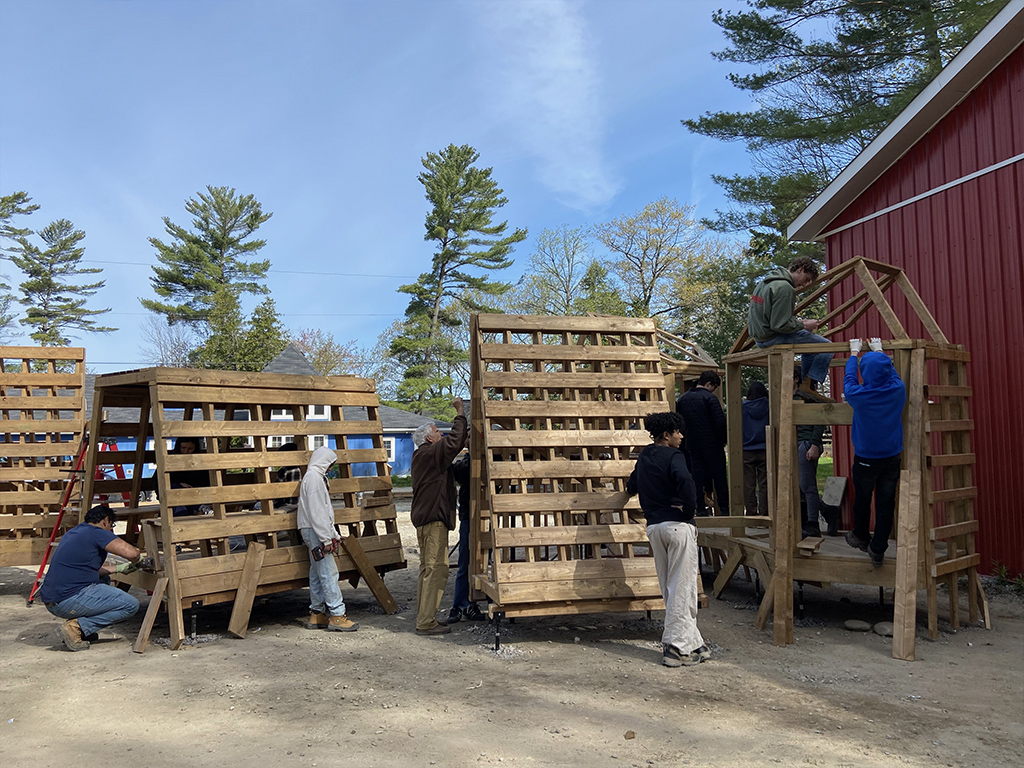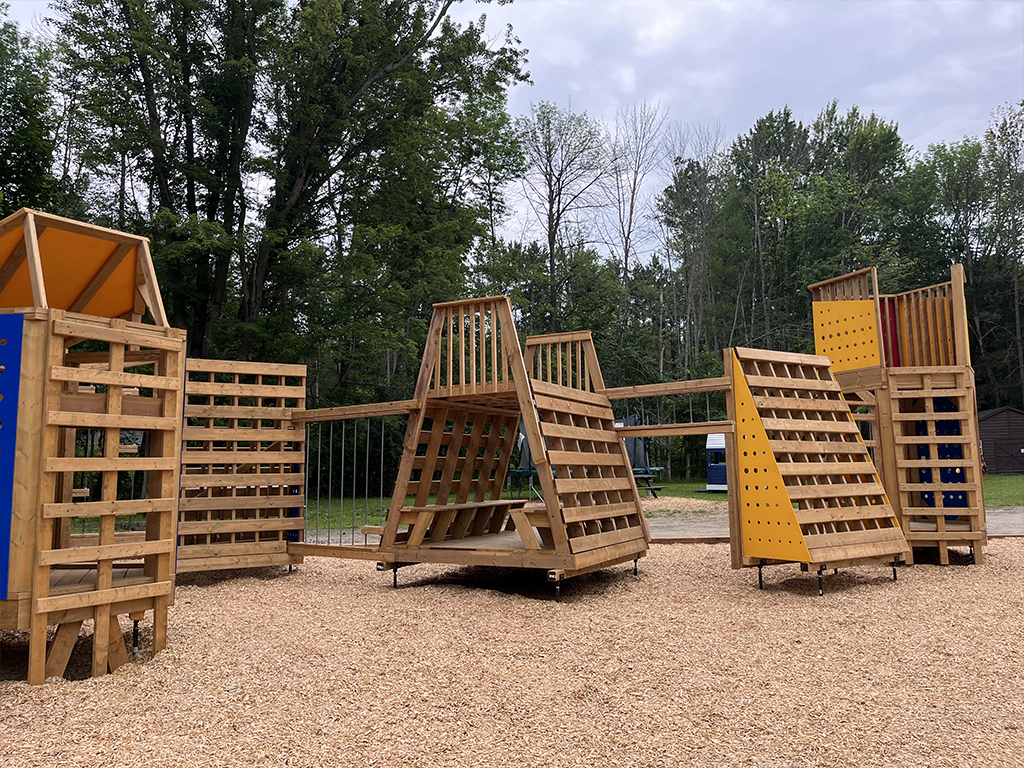Empowering Play: DAS Students Design Inclusive Playground for Neurodivergent Youth at Camp Winston

We sat down with fourth-year students Saroash Haider, Hunter Kauremszky, and Evan Fernandes to talk about Camp Winston (external link) , where students designed a playground extension for neurodivergent youth earlier this year.

Saroash: We were the main design leads, and we were tasked with constructing a playground. Originally it was supposed to be constructing an entirely new playground, however Camp Winston thought it would be better to give students an added extension as opposed to rebuilding one from the ground up. We had typical design lead roles - we led approx 25 students. Everyone contributed to the design process. Once we met with the camp’s team and received approval, we were able to start working on the constructability. The entire project started in January and ended in August.
Evan: We were really involved from the schematic stage to construction, and we split up into two teams: Saroash and Hunter led one, and I led the other. We combined our ideas and took the best ones and it led to our final result, so the culmination of our design phase.
We also got to meet with the camp engineers, so we experienced the structural side of things and from there we came up with a refined proposal, where we considered the budget and the actual structure, and how the components actually come together.
From there, we had it approved and made these step-by-step manuals to build it. We constructed it in two visits. We took twenty students with us, and the camp provided accommodations while we built the extension. It’s not as big as the full park, but it’s still a relatively big extension! We fabricated it at DAS, and then assembled it onsite.
Saroash: I think what’s interesting is it was very steeped in collaboration in terms of the client and architect relationship. This project essentially puts first and second year students (who have never seen a design build project and don’t have experience) on the front lines to get their hands dirty. For us, it was great to collaborate with clients and remain in discussions with them in order to ensure this park can be a safe, diverse, and inclusive space for neurodivergent youth.

What did this experience offer you?
Evan: This project gave us great insight into the schematic to construction process. In school it’s all theoretical, and in this case it’s meeting with clients knowing what their needs and wants are. Implementing their instructions and building in the real world was so rewarding! I also enjoyed talking to first, second, and third year students - listening to their ideas and incorporating them was so enriching. We all learned a lot from one another.
Saroash: This project gave me a real sense of leadership. I’m involved in other extracurricular activities, and while that does give me a sense of leadership, a design-build project requires a very different style of leadership. It was a new experience and it was also a very fulfilling one, because we were able to take what we learned and expand on that. Not just learn for ourselves but teach others - it was a big learning and teaching opportunity for everyone.
Hunter: I've participated in Camp Winston in the past (as a fabrication team member), so I had some experience working with the types of construction methods we were using, but the biggest thing for me was getting leadership experience as Saroash mentioned. Motivating the team to work together, come to meetings, work on designs and figure out ways to collaborate together to create the best outcome was so rewarding. That was the biggest takeaway - developing my leadership skills.
What were some of the challenges that arose, and how did you approach them?
Hunter: The transition between the design and construction phase was difficult because a lot of students weren't super familiar with the construction methodologies we were using. There was a lot of back and forth between contractors and counsellors to try and work out a design that would be feasible to build, within the budget and still aligned to the design considerations that the camp was looking for.
Saroash: I also think we faced a big challenge when the organisation decided they just wanted a design for the extension. Because we had all these big ideas and such a large scope to work with, so to narrow it down and make it concise was challenging but we worked through it.
Hunter: At one point they wanted us to consider using elements from the catalogue in our design and that got thrown out. We had to be versatile and be ready for the challenges they threw at us.

Can you speak to the specifics of the actual design, and how it changed based on this feedback?
Saroash: The entire playground lends itself to play, and the entire structure is configurable and versatile.
Evan: It’s designed for kids with neurological disabilities, so we’re creating a challenge for them in a way - the idea with the high towers is to create areas that would make it difficult for them to explore while also providing areas for isolated seclusion.
Hunter: The playground is intended for a wide range of ages (8-17), the camp is unique in that it doesn't have a lot of the training wheels and buffers that other playgrounds have. So pretty much everything in it is climbable, we didn't want to create limitations and barriers that would suggest that people shouldn’t be climbing on the roofs. Everything is a surface kids can climb on! It was an interesting thing to work through - not what you typically do on a playground.
Saroash: The counsellors encouraged us to push the boundaries - make it something thrilling and exciting - who cares if they want to jump off the highest point. It was almost as if we mashed a jungle gym together with a playground. It also helped us widen our design ideas, because we were so focused on meeting the requirements of the code, but once we took that away we were able to foster something that was quite enjoyable.
